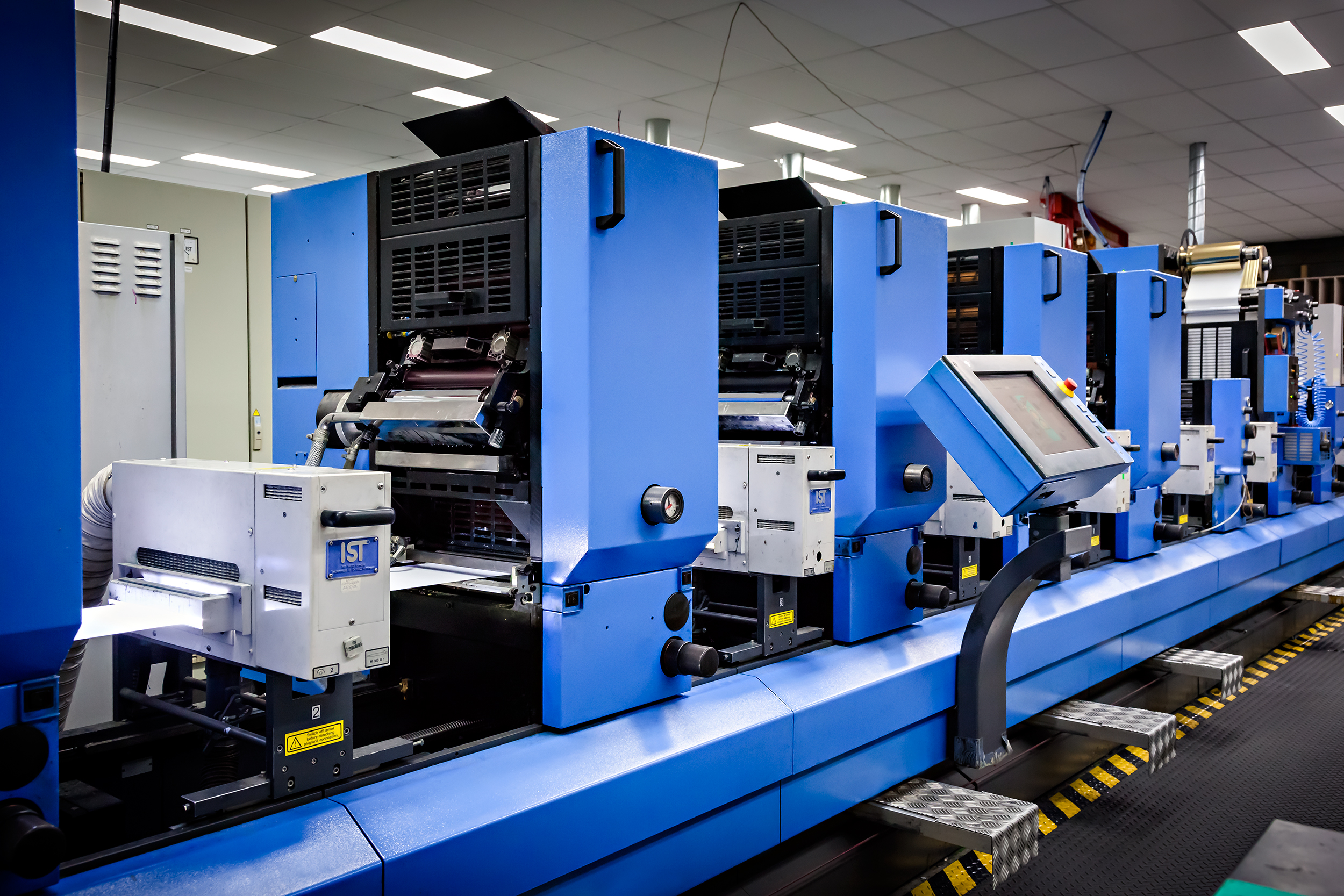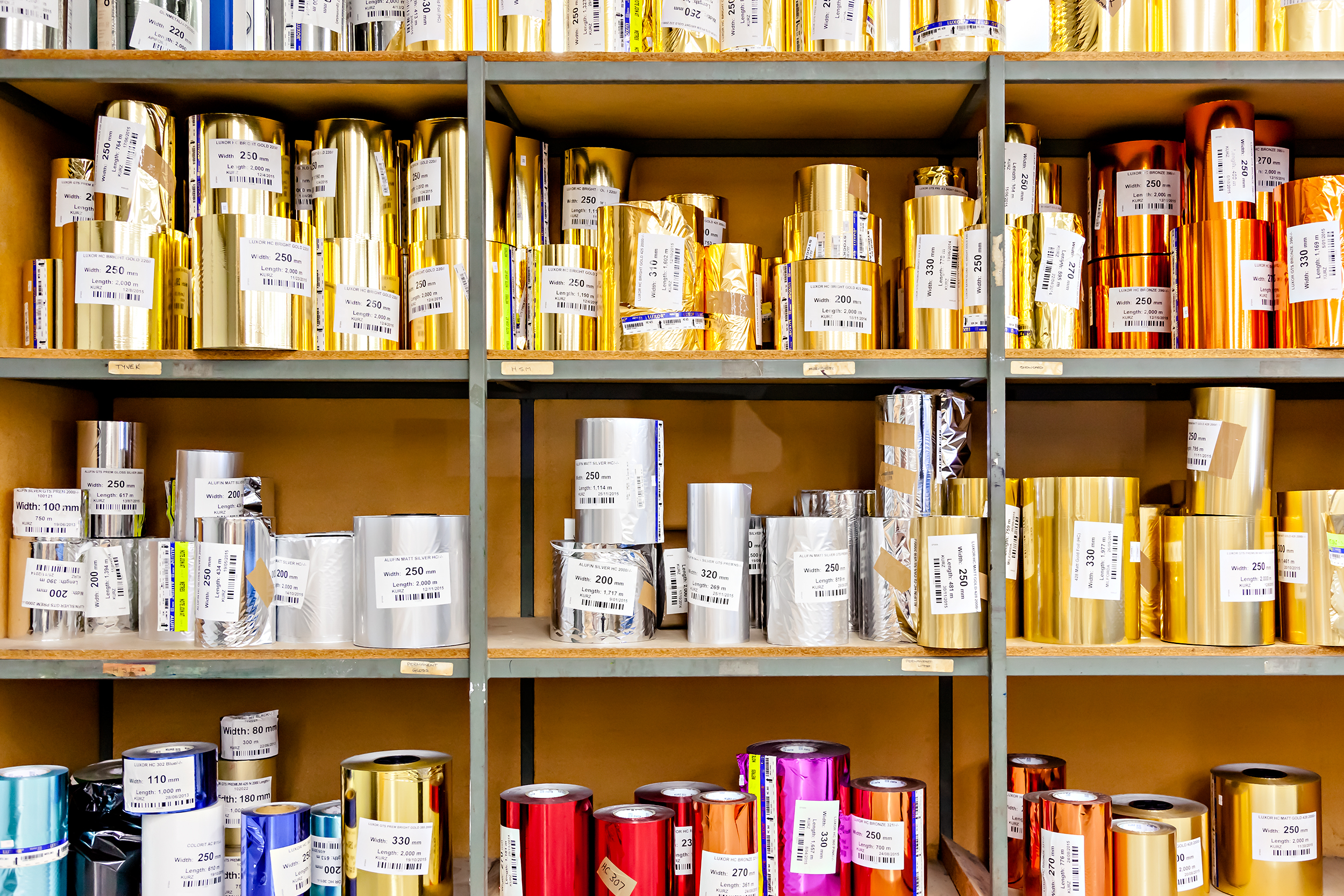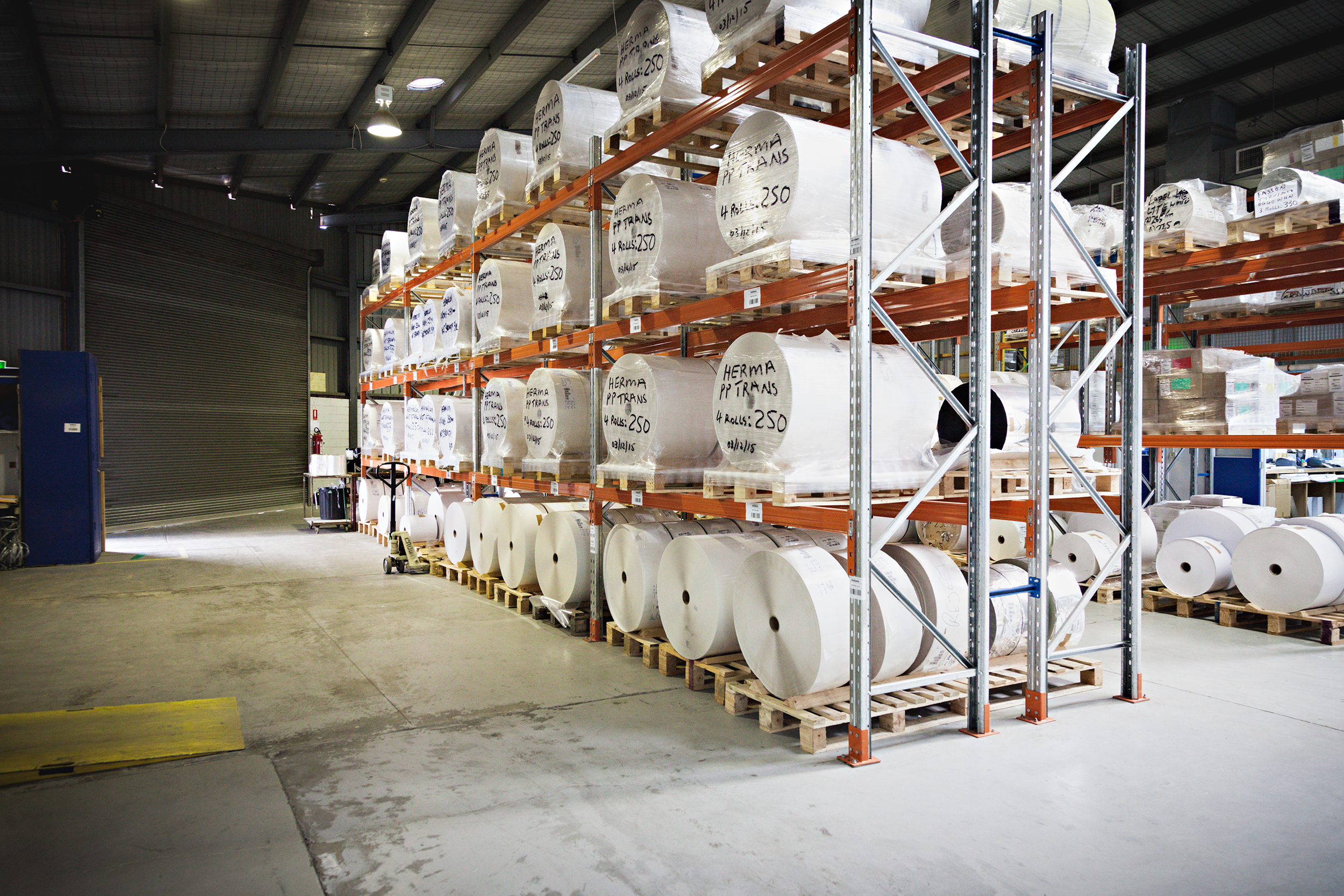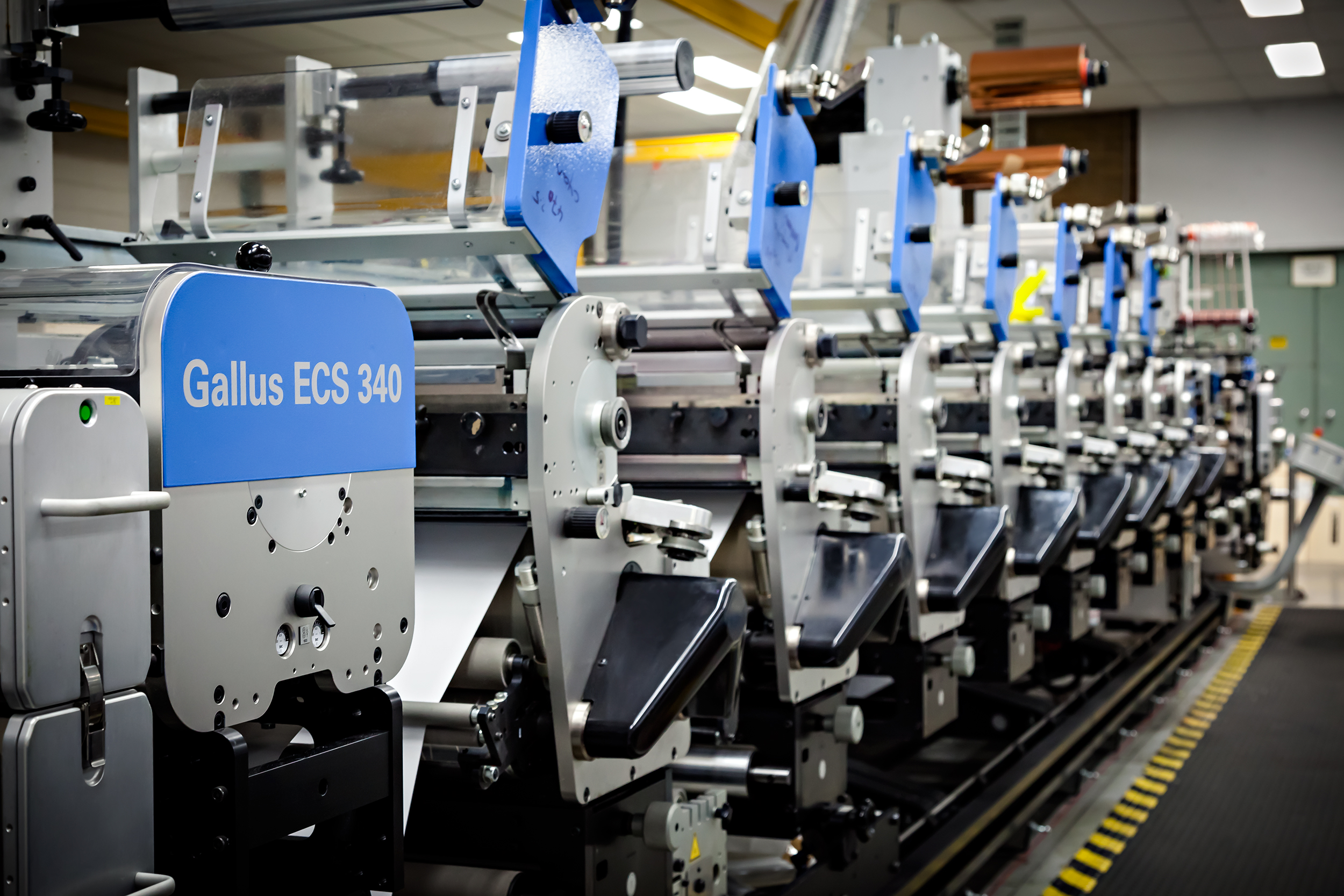Print Processes
Labelhouse has a history of pioneering different print techniques and process in the Australian market. Our investments in technology have always been made with quality manufacturers from around the world to ensure we produce the highest quality labels for our customers no matter which market segment they are in. Our aim is to partner with suppliers who can provide us with the best tools to achieve the highest quality print results for our brand partners.
PRINT PROCESSES & PRINT TECHNIQUES EXPLAINED
PRINT PROCESSES
PRINT TECHNIQUES
PRINT PROCESSES:
FLEXOGRAPHIC (FLEXO)
Flexographic printing is also a form of relief printing which utilises a flexible plate. It is essentially a modern version of letterpress which can be used for printing on almost any type of substrate. It is very well suited to printing large areas of solid colour. Flexo plates can be created through an analog or digital platemaking process. Labelhouse use the digital process computer to plate (CTP) which produces a plate with far more detail. The image areas are raised as per the letterpress process on a photo polymer plate. The ink is then transferred from the ink roller which is partially immersed in the ink chamber. The ink is then transferred to the anilox whose texture holds a specific amount of ink as it is covered with thousands of tiny cells that enable it to control the volume of ink transferred onto the printing plate in an even and uniform thickness quickly. A doctor blade is used to remove any excess ink from the anilox to ensure a quality result. The substrate is finally sandwiched between the plate and the impression cylinder to transfer the image to the substrate. The UV inks are then dried through UV lamps before moving to the next process/print station. This form of printing offers a highly repeatable result, with the control measures of the plates, anilox and inks helping to achieve the consistency from one print run to another. Due to the configuration of Labelhouse’s flexo press we have managed to incorporate the press into producing high volume FMCG work through to high quality wine labels.
OFFSET (LITHOGRAPHIC)
Offset printing is a commonly used technique in which the inked image is transferred (or “offset”) from a plate to a rubber blanket, then to the printing surface. When used in combination with the lithographic process, which is based on the repulsion of oil and water. The offset technique employs a flat (Plano graphic) image carrier on which the image to be printed obtains ink from ink rollers, while the non-printing area attracts a water-based film (called “fountain solution”) which keeps the non-printing areas ink-free. Offset printing in label production is idea for printing very fine images or text and for printing on textured or uncoated substrates. Labelhouse use this process primarily for the Wine and Beverage markets.
DIGITAL
Digital printing is a relatively recent development in the label printing world with two primary forms of digital printing currently available; inkjet and toner/digital offset. Labelhouse has a state of the art HP toner/digital offset press to cater for the high quality demands of the Wine and Beverage markets along with other market segments. It is often thought of in terms of small-run jobs where the customer is sacrificing a level of quality for price when in fact the opposite is often true. The major advantages of digital printing over conventional print process lies in reductions in preparation time, ability to incorporate variable data or images in designs, micro-text and other brand security features. Digital printing currently has a higher cost per meter than offset printing, but the price is usually offset by avoiding the cost of plates and other make-ready charges. The time savings and reduction in labour, paired with the ever increasing capability of the digital technology, means digital printing is reaching the point where it can match or even supersede conventional printings’ stranglehold on the ability to produce economic larger print runs. Digital deposits a toner onto a wide variety of substrates (very similar range to offset). The toner does not permeate the substrate, as conventional inks do, but forms a thin layer on the surface of the substrate that is additionally adhered to the substrate by using a fuser fluid with heat process. Digital printing utilises CMYK as well as opaque white, green, orange and violet to match PMS colours. The labels are then varnished to provide additional protection. Labelhouse has two high end finishing presses which provide additional embellishments, varnishing and die cutting for our digital labels depending on their requirements.
SCREEN
Screen printing is an older print process which uses either a silk screen or metal mesh to allow a higher volume of ink/varnish to transfer onto the substrate. The “gaps” in the mesh control the flow of ink/varnish and also dictate the height of the print which is achievable. Labelhouse has screen printing integrated into our press configurations so that it is in in-line option on our conventional presses and an off-line option for digital printing. Varnishes and metallic inks tend to produce the best results through this process.
PRINT TECHNIQUES:
GLOSS VARNISH
Gloss varnish is used to achieve a shiny finish to the label which has a degree of reflectivity to it. A gloss varnish can also be used to achieve a higher slip factor on the labels if friction is a consideration for the labels.
MATT VARNISH
Matt varnish is used to significantly reduce the reflectivity of the substrate and achieve a flatter looking label with a very low sheen.
SATIN VARNISH
Satin varnish is used to achieve a look between gloss and matt but it sits more towards the matt side.
TACTILE VARNISH
Tactile varnish is used to achieve textured feel with a super-matt look. The varnish can be printed with a plate to emulate grains, patterns or an embedded background image/logo on the label.
HIGH BUILD VARNISH
High Build varnish is achieved through the screen printing process and is used to add a gloss varnish which protrudes from the label to help enhance a brand-name, image or logo in an eye catching fashion. High Build can also be useful in simulating textures such as wood grain or leather. It is also a “new” way of simulating embossing on a label.
GLOSS LAMINATION
Gloss lamination is very similar to gloss varnish however is provides an extra level of protection for the labels. Lamination is also used to increase the rigidity and thickness of a substrate (mainly synthetics) to assist in overcoming application/dispensing issues.
MATT LAMINATION
Matt lamination has a more unique finish and looks more like a silky satin than matt; it also provides an extra level of protection for the labels. Lamination is also used to increase the rigidity and thickness of a substrate (mainly synthetics) to assist in overcoming application/dispensing issues.
HOT FOIL
Hot foil as the name suggests uses heat (approx. 170 degrees Celsius) to transfer the foil material onto the substrate. Through the transfer process the foil die leaves a natural embossing of the stock as well as the foil material. This process is preferred when printing on textured or uncoated materials and for fine type/line work. Labelhouse has some access to some high quality tooling producers which allow us to foil images others consider too difficult.
COLD FOIL
Cold foil is transferred onto the substrate through the use of a printing plate, a set of rollers and cold foil adhesive. It is suited to printing on coated substrates with a smooth printing surface. You can be extremely innovative in the use of cold foil as we have flexibility to move the unit on our press. In essence you can print a solid image with silver cold foil and then print a 4 colour process image over the top to achieve a foil with all of the colours of the rainbow whilst utilising the single foil colour. Labelhouse would be happy to discuss more options with you to add value to your brand.
EMBOSSING
Embossing uses two plates (male and female) to indent the substrate with an image, graining or text. The embossing plates are either a hardened photo polymer plate or bronze plates. It is commonly used to add additional texture to a stock or highlight other design elements. Labelhouse has access to suppliers who can produce multi-tier embossing tooling to achieve different levels within your embossing. It is best to speak with your Account Manager at the design stage if you are thinking of incorporating embossing to see what is possible.






